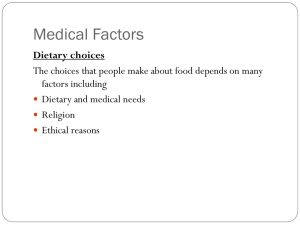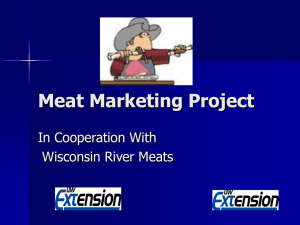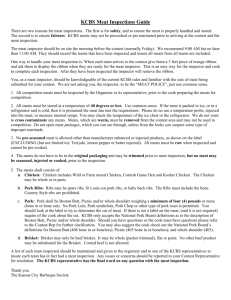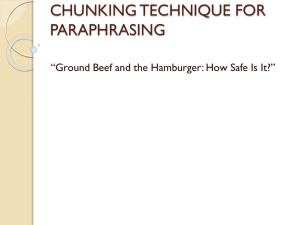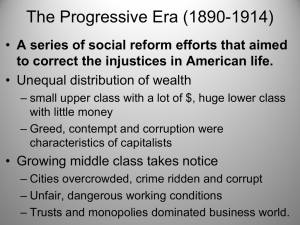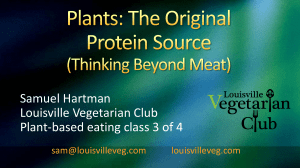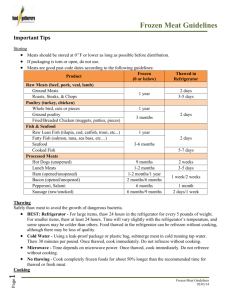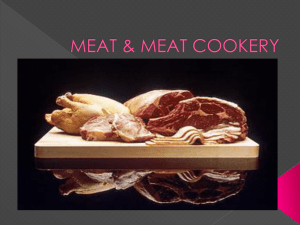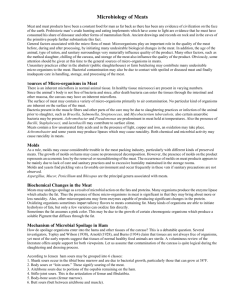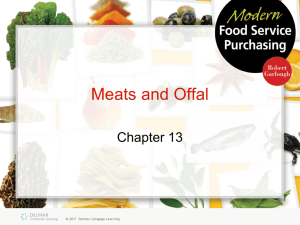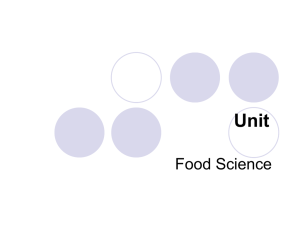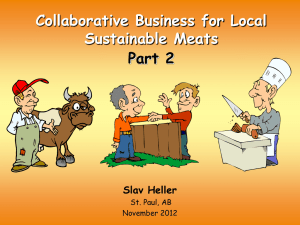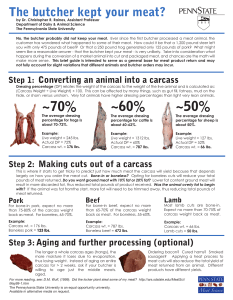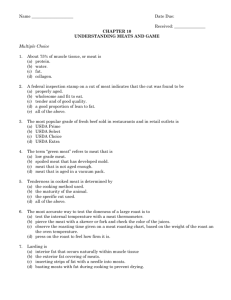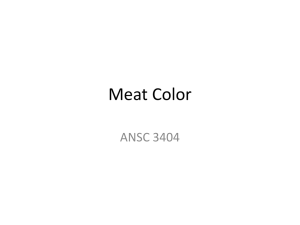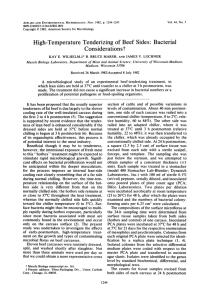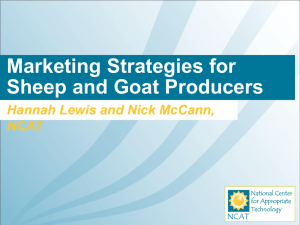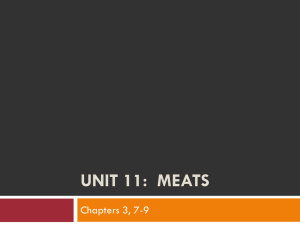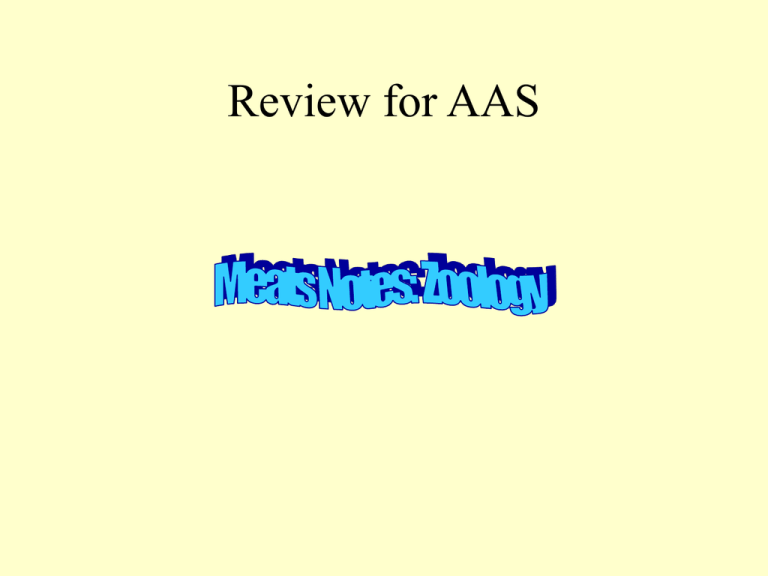
Review for AAS
Vocabulary
• Palatability: how a food appeals to the palate
(smell, sight, taste, texture, etc.)
• Retail Cuts: small cuts of meat customers
purchase at grocery stores
• Antemortem: before death
• Wholesale Cuts: large sections of carcass ( half a
hog or quarter of a beef) that are sold to stores
who cut them into retail cuts
• Rigor Mortis: a physiological process where
muscles stiffen and lock into place
• Exsanguination: removal of an animal’s blood
• Postmortem: after death
• Mastication: chewing
• Meat (muscle?): any edible tissue from
animals
• Chine: the backbone of an animal
• Kosher: any food prepared according to
Jewish dietary law
• Immobilization: to render an animal
oblivious to pain
• Aging: to let a carcass hang in a cool
environment for a period of time to let
enzymes break down meats
4 Categories of Meats
•
•
•
•
•
•
•
•
Red
Poultry
Seafood/Fish
Game
Red: beef, veal, lamb, pork (?)
Poultry: chicken, turkey, duck (?)
Fish: trout, crab, salmon, lobster, tilapia
Game: bear, turkey, duck, antelope, grouse, deer,
moose, pheasant
Meat Names
•
•
•
•
•
•
•
•
•
Poultry
Beef
Meat
Veal
Mutton
Lamb
Pork
Chevon
Cabrito
History of the Meat Industry
• Uncle Sam:
– Sam Wilson a pork producer
• Cincinatti was called
– Porkopolis
• Wall Street:
– actually a wall erected in Manhattan to prevent
pigs from entering town, kept the name ever
since
History of the Meat Industry
• Packing Industry: went from an art to a
science (why?)
• The Packing Industry:
– meats were salted and packed into barrels
• Used to be one animal at a time, now:
– Beef = 4,000/line/day
– Pork = 8,000/line/day
– Chickens = 70-80,000/line/day
History of the Meat Industry
•
•
•
•
No federal inspection
Upton Sinclair’s book “The Jungle”
Meat Inspection Act of 1906
Humane Slaughter Act of 1957
Meat Industry
• Seven areas of inspection
• Sanitation, antemortem, postmortem,
control and restriction of condemned
materials, product, laboratory
inspection, marketing and labeling
The slaughter process
•
•
•
•
•
•
Live inspection
Immobilization
Humane slaughter act
Bolt, electricity, gas
No pain
Heart must continue pumping
Kosher Slaughter:
~ Any food prepared according to Jewish dietary law
~Are exempt from stunning the animal but must be done
as humanely as possible
~Must be from religiously acceptable animals
~Meats are undesirable if improperly slaughtered, are not
cloven hooved, etc. called non kosher
~Kosher foods have a mark (Circle U)
~Area must be blessed by a rabbi, only the forequarters can
be used because sciatic nerve in hindquarters
Continuation of Slaughter
Process
• Exsanguination
• Slit the throat, done quickly to prevent
hemorrhaging or spots in the meat from ruptured
blood vessels
• Gut the animal, save edible organs (liver is the
most common edible organ)
• Internal organs are inspected for health problems,
each carcass for consumption has to be inspected
Processing the Carcass
• Carcasses are split
• Cooler
• rigor mortis (6-12 hours for beef and lamb,
30m-3hours for pork)
• Enzymes and microorganisms break down
tissue
• Rigor – Relax = Meat
When does Meat become
Muscle?
• After the rigor/relax process!!!
• Why hang a carcass?
– Over a week
– Enzymes and microorganisms break down
meats
– Increase palatability and flavor and tenderness
Meats are Good!
• Meats taste good because of intramuscular
fat
– marbling
• This is fat within the meats, not globs that
you can cut off
Antimortem Effects that can affect meat quality:
A. Feed
B. Genetics
C. Sex/Age
D. Stress
E. Disease
***Porcine Stress Syndrome (PSS) is a stress that actually ruins
the meat of an animal and causes the meat to be (PSE) pale, soft
and excudative (watery)
*** DDF or dry, dark and firm is a stress condition in cattle
causing “dark cutters”
Postmortem effects that can affect meat
quality:
~heating and cooling is the main one!
~cleanliness
Where do steaks and chops come from?
~the loin of the animal

